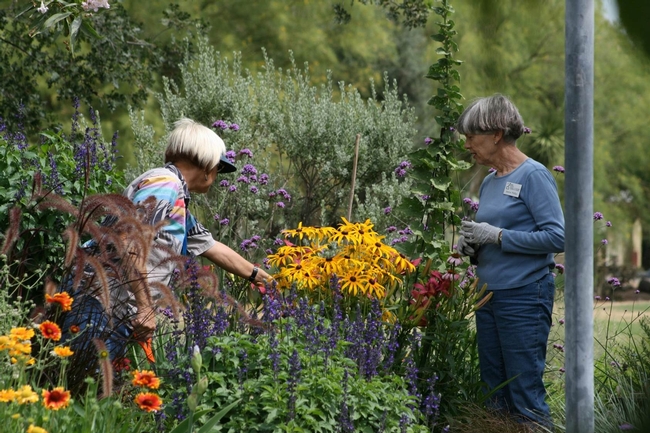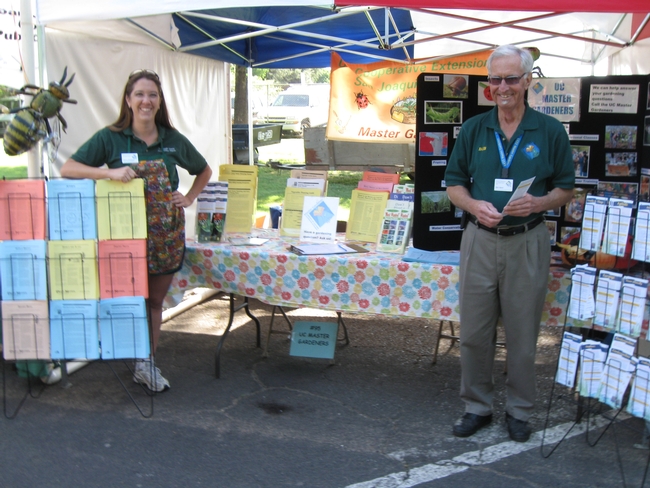From the UC Blogosphere...
Recognizing Volunteers for All They Contribute This Earth Day
2015 marks the 45th anniversary of Earth Day, which is celebrated by more than 1 billion people worldwide. The national theme for this year's Earth Day is It's Our Turn to Lead, a phrase that directly describes the more than 6,000 UC Master Gardener volunteers actively leading in their local communities.
UC Master Gardeners are critical in supporting UC Division of Agriculture and Natural Resources' (UC ANR) strategic initiatives for healthy communities, healthy environments and healthy plants across the state of California.
“UC Master Gardener volunteers represent the most passionate and dedicated group of people I have encountered,” said Missy Gable, statewide director of the UC Master Gardener Program, “they are enthusiastic about sharing their knowledge of research-based gardening information with the public and their commitment of time to this practice is both generous and inspiring. UC Master Gardeners are an unbelievable resource for all residents in California and I want to recognize their efforts this Earth Day. Volunteers are taking the lead to provide sound advice to CA gardeners as we all work to use water appropriately, connect to our food systems and protect our environment.”
Join us on Earth Day 2015!
Perhaps you've seen your local UC Master Gardeners answering questions at the Farmer's Market or you've read an article by a volunteer in your local paper. If the 45th anniversary of Earth Day has inspired you to become more active with your environment, consider connecting with your local UC Master Gardener Program.
Sample of UC Master Gardener Events Happening Across the State the Week of Earth Day:
- Calaveras County:
Open Garden Day
April 25, 10 am – 2 pm - Contra Costa County:
Antioch High School Earth Day Festival
April 22, 12 – 3 pm
Lafayette Earth Day Festival
April 26, 11 am – 3 pm - El Dorado County
Rainwater Harvesting/Greywater Use
April 25, 9 am – 12 pm - Lake County:
Yuba College Earth Day
April 22, 10 am – 1 pm - Napa County:
Earth Day Celebration
April 25, 10 am – 3 pm
Sierra College Earth Day 2015
April 22, 10 am – 3 pm - Sacramento County:
Plant Clinic - Greener Gardens Expo and Garden Tour
April 25, 10 am – 3 pm - San Diego County:
Marine Corps Base Camp Pendleton Earth Day Celebration
April 22, 11 am – 2 pm - Santa Clara County:
Earth Day - San Jose
April 22, 10 am – 3 pm - Sonoma County:
Drip Irrigation - Rincon
April 25, 10:30 am – 12:30 pm - Ventura County:
Front Yard Landscape Irrigation and Water Usage
April 22, 1 – 3 pm
UC Master Gardener volunteers receive University training in horticulture from experts in the field, mostly UC Cooperative Extension Advisors and Specialists. In exchange for training, UC Master Gardener volunteers extend research-based information on sustainable home horticulture practices to the public. Whether you are looking to reduce your landscape water use, grow tomatoes or even become a UC Master Gardener yourself, volunteers are ready to help you. Find a program or event near you!
Are E-Books in Your Future?
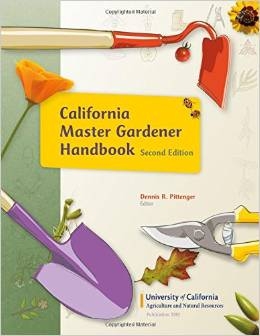
Moving into the digital age, the Handbook's 2d Edition is now also available in e-book form. I bought the e-book a month ago. I find it quite complete and useful. Although I somewhat miss the heft of reading the “paper book”, with the digital version I can find something I'm interested with just a click…and everywhere it occurs in the Handbook. I've now loaded the Handbook on every digital device I have except for my phone…and I'm thinking about that too. It's easily readable on my inexpensive 7” tablet (Android OS), laptop (Windows 7 OS), and desktop (Windows Vista OS). For Apple owners, the description of the e-book says that it is formatted for Apple's iPad. I ordered it online from UCANR, and within a few seconds of paying for it with my credit card, I downloaded it and loaded it to my computer. With some available, free software I also loaded it onto my tablet and laptop. If this is your first e-book, you like me, will probably also need e-book reader software on your computer. Many good ones are readily available and free for whatever computer and/or operating system you are using.
Once you are into e-books, especially for gardening and horticulture, there are numerous e-books available for a wide variety of interests and cost, including free. For example, two free e-books that I've found of interest that you might also be interested in are described below:
Knott's Handbook for Vegetable Growers
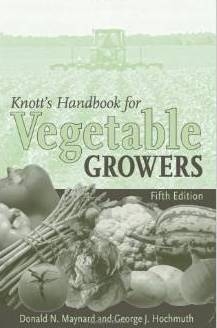
… from Amazon… “The leading one-stop reference for commercial vegetable growers for more than 50 years Rooted in tradition, branching out to the future. For more than half a century, Knott's Handbook for Vegetable Growers has provided generations of commercial growers with the most timely, accessible, and useful information available on the subject…”
This handbook is definitely for the serious vegetable grower and should be a useful addition to UC publications. If you are interested and probably already an avid home vegetable gardener or maybe a “newbie” wanting even more detailed vegetable growing information, you should find this handbook of interest …and the price is right. While it is commercially available for purchase (new it is > $65), it can also be downloaded from a University of Missouri Extension web site for free without any obvious restrictions. http://extension.missouri.edu/sare/documents/KnottsHandbook2012.pdf
Hybrid: The History and Science of Plant Breeding
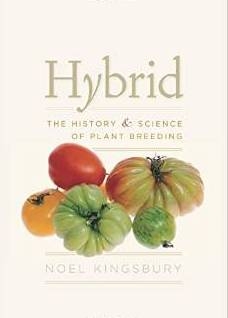
…from Amazon.. “With Hybrid, Noel Kingsbury reveals that even those imaginary perfect foods (..of our memories…) are themselves far from anything that could properly be called natural; rather, they represent the end of a millennia-long history of selective breeding and hybridization. Starting his story at the birth of agriculture, Kingsbury traces the history of human attempts to make plants more reliable, productive, and nutritious—a story that owes as much to accident and error as to innovation and experiment.
This e-book interested me as I've recently been following the GMO food discussions on the web. Kingsbury is a well-known landscape architect, designer, and author. This book provides a readable introduction of the history of how our foods evolved over the last thousand years… leading up to the current (and probably forever) discussions of GMO foods. The book can be obtained free from the University of Chicago Press this month (April 2015) at the following link:
http://www.bibliovault.org/cgi-bin/DeliverADE.epl?transid=Bt9BJ8ODLtGHjImd
This free download comes with DRM (digital rights management controls) that might cause you to have to jump through some hoops to download and read it, i.e. read the publisher's instructions closely. I believe the book is worth it. You will also have learned some interesting facets of manipulating e-book formats as well.... good training for the future...
Here's to some great e-book reading… and learning… and for free.
Steve Morse
Contra Costa County Master Gardener
Lawn Replacement
Lawn Replacement Nancy Hartwick UCCE Master Gardener I want to replace my lawn to cut down...
Daily Life For Master Gardeners
Green Beans At Grandma's House By Andrea Peck My grandma used to grow green beans. One summer, we took the long...
Learn How to Make an Insect Collection--Online and During UC Davis Picnic Day
So, you want to make an insect collection? How do you begin? Where do you start? Distinguished Professor James R. Carey of...
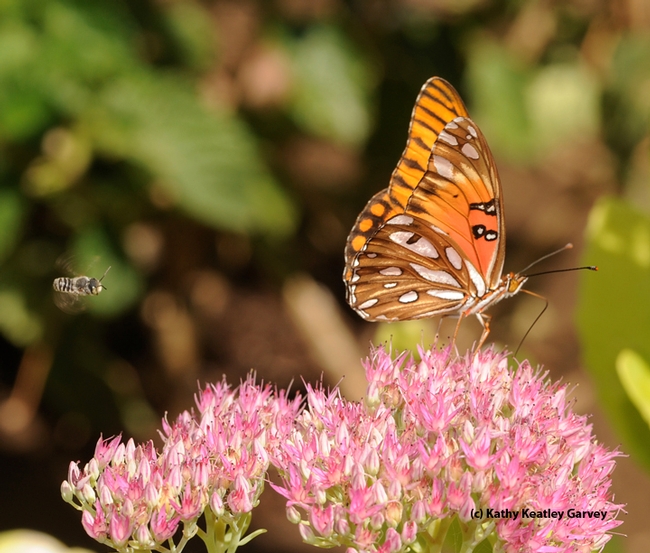
If you're interesting in collecting insects, stop by Briggs Hall on Saturday from 10 a.m. to 3 p.m. to learn how to make an insect collection. Here a leafcutter bee is targeting a Gulf Fritillary butterfly. (Photo by Kathy Keatley Garvey)
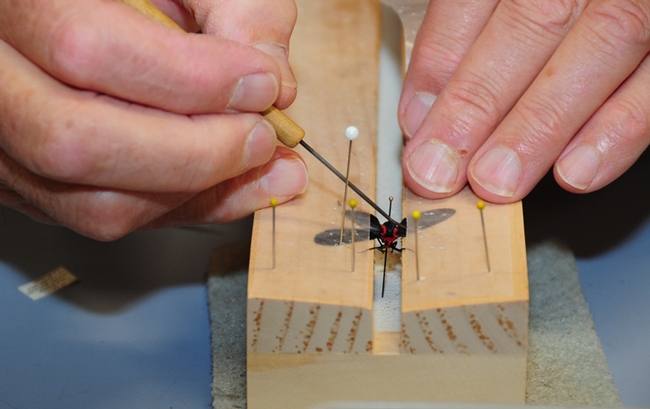
Bohart Museum of Entomology associate Jeff Smith spreads the wings of a tiger moth, Ctenucha rubroscapus. (Photo by Kathy Keatley Garvey)



